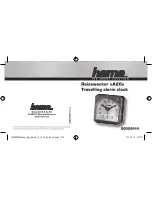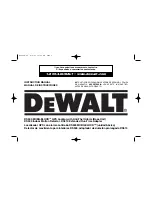
07
06
Improper location can have a negative impact on device performance and may cause false alarms. To
promote accurate detection and full protection of your home, do not install this combination smoke and
carbon monoxide alarm:
This combination smoke and carbon monoxide alarm should be installed by a qualified technician, and all
wiring should be in accordance with The National Fire Protection Association’s Standard 72 and relevant
regulations or applicable codes in your local jurisdiction. Specific requirements for this alarm vary by state
and region. Check with your local Fire Department for current requirements in your area.
In a garage or any area that is dusty, dirty, or greasy.
In bathrooms, kitchens, garages, attics, in unheated areas, or near recessed ceiling areas, ceiling fans,
furnaces, or furnace vents. Keep the alarm at least 3 feet (0.9 m) away horizontally from bathroom doors.
Within 5 feet (1.5 m) of smoke sources, such as a stove.
In extremely humid environments. Keep the unit at least 10 feet (3 m) away from baths, saunas,
humidifiers, vaporizers, dishwashers, laundry rooms, or other sources of extreme humidity.
In turbulent air, such as near ceiling fans, heat vents, air conditioner vents, or open windows, as excessive
airflow may prevent CO from reaching the sensors.
Under direct sunlight.
In dead air spaces that may prevent smoke from reaching the device.
Near cooking appliances, dusty areas, showers, or any areas where the temperature drops below 40°F
(4.4°C) or rises above 100°F (37.8°C).
This device should be installed on a standard 4-inch (10-cm) wiring junction box, or on any ceiling or wall
allowed by local codes.
An appropriate power source is 120 V AC Single Phase, supplied from a non-switchable circuit, which is
not protected by a ground fault interrupter.
If you want this unit to function as a standalone unit, keep the insulating cap on the red line to ensure
that it does not connect to other units.
If you want to create an interconnected alarm system, ensure all interconnected devices are powered by
a single circuit. In accordance with NFPA restrictions, up to 24 devices can be added in a single circuit,
including 18 alarms and six range extenders. A maximum of 12 smoke alarms is allowed in the 18 alarms.
In an interconnected system, the maximum wiring distance between the first and last device should be
no more than 1000 feet (305 m).
Interconnect devices within a single-family residence only. Interconnected devices will only work if they
are wired to compatible devices and all requirements are met. Note that AC hardwired interconnection
only works for X-Sense XP04, XP05, XP06, XP04-S, XP05-S, and XP06-S devices.
Locations to Avoid
Before Installation:
Installation
●
●
●
●
●
●
●
●
●
●
●
●
●
●
1. Get to Know Your Alarm
2. Turn Off Power
Mounting Bracket
Black Power Line
White Neutral Line
Red Interconnection Line
Mounting Slot
Power Connector
Battery Compartment
Fuse or Circuit Breaker
L
RED
BLACK
WHITE
First
Alarm
Additional
Alarm
Additional
Alarm
Additional
Alarm
RED
BLACK
WHITE
RED
BLACK
WHITE
N
BLACK
WHITE
RED
Before installation, turn off power to the area where this device will be installed at the circuit breaker or fuse
box. Otherwise, it can result in serious electrical shock, personal injury, or even death. Do not restore power
until all devices are completely installed.
Breaker Box
WARNING
Electrical Shock Hazard
Failure to turn off power may result in
serious electrical shock, injury, and even death.

































